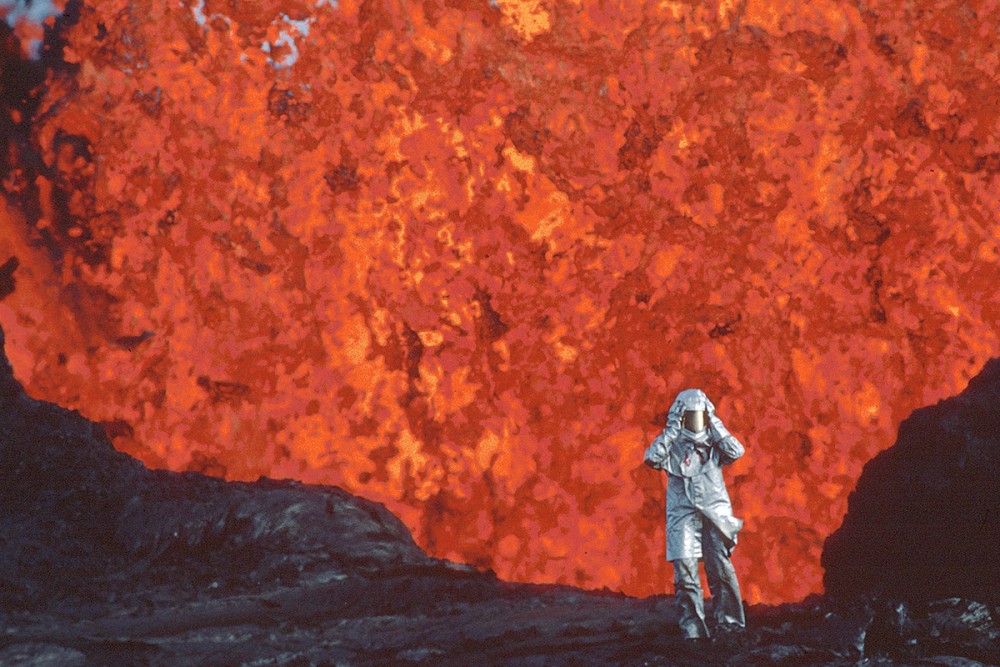
“You’re looking at the space pictures, aren’t you?” my daughter asked as she came into the kitchen, where I was supposed to be making her lunch. I’d been looking at the images released by NASA from the James Webb Telescope off and on for several days, forcing my family to gather around my laptop to rhapsodize with me, returning again and again when I was alone. Even at age seven, my daughter understood that the pull of those images had sucked me out of the orbit of ordinary life.
I am very much an amateur when it comes to scientific cosmology, and I know only as much as one can learn reading science blogs for laypeople and watching NASA explainer videos. But I recognized the power of fascination—and even something of the same amateur spirit—in the beautiful, meditative documentary Fire of Love, about French volcanologists Maurice and Katia Krafft (written and directed by Sara Dosa, streaming on Disney+). Compiled from footage almost exclusively taken by the couple themselves, it charts their love story with each other and with the violent, mysterious forces that produce volcanoes.
The Kraffts’ footage makes the mundane layers of the earth seem strange, majestic, even alien: lava streams erupt into the air like fireworks; molten flows hypnotically fold in on themselves, shedding their blackened skins to reveal red-hot magma like giant mounds of taffy being pulled apart and kneaded back together; ash clouds rise with violent force, evoking the terror and the beauty of nuclear detonation. Often backlit by the red lava exploding and cascading behind them, the tiny human figures of Maurice or Katia seem to be skipping along a crater’s edge, seemingly an arm’s reach from living fire. Sometimes dressed head to foot in silver fireproof suits and sometimes shockingly unprotected, they dance along these rings of fire, drawn like insects to a flame or like ritual dancers to the heart of a mystery.




